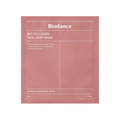Skin Cycling: The New and Improved Approach to Skincare
Whether you are a beginner in skincare or have been doing skincare for a while now, you may have come across the term #skincycling trending on TikTok and popping up all over the internet recently. So what is skin cycling and why has it become such a phenomenon in the skincare world?
The concept of skin cycling, coined by Dr. Whitney Bowe is basically a new approach to skincare where you perform a four-day cycle during your nighttime routine and take a break in between the days you use active ingredients, allowing the treatment and recovery of the barrier of your skin. The key is to use no more than three products before bed and only one containing active ingredients.
Night One
After cleansing, on the first night, you would apply a chemical exfoliant on dry skin to start off and finish with a moisturizer of choice. Chemical exfoliants such as AHAs and BHAs are preferred over traditional scrubs because it is more gentle on the skin barrier and is also more effective. Exfoliation helps to remove dead skin cells and preps your skin to absorb actives more easily. Actives are skincare products that contain an active ingredient meant to target a specific skin concern. Some of the most common types of actives that you may have come across during your skincare journey includes actives such as hyaluronic acids or vitamin E for treating lack of moisture, AHAs, BHAs, or vitamin C to target hyperpigmentation and dark spots, or salicylic acids or benzoyl peroxide to treat acne.
Masksheets Recommendation:
COSRX BHA Blackhead Power Liquid

Image via Cosrx Official Instagram
Night Two
On the second night, you would apply a retinoid product. Retinoids help stimulate collagen production and increase cell turnover. Retinoids are highly regarded as an ingredient that can help treat skin concerns such as acne and aging.
After cleansing and patting your face dry, apply a pea-sized amount of retinoid over the entire face and follow with a moisturizer afterward. It is recommended to directly apply retinoids after cleansing to increase their effectiveness however, if you are a beginner to retinoids or if you have sensitive skin, I recommend mixing your retinoid with a moisturizer and then applying it on your face or applying a thin layer of moisturizer before applying your retinoid as well as after to buffer the effect and reduce irritation. If you feel like your skin is still tight or dry, a second application of moisturizer may be needed.
Masksheets Recommendation:

Image via Obagi Medical Official Instagram
Nights Three and Four
The third and fourth nights are crucial as this is the time you allow your skin to recover from the treatments of the previous two days by locking the skin with ample moisture. After cleansing, leave your skin slightly damp and apply a humectant of your choice first and follow with an emollient after. Humectants are hydrating serums containing ingredients such as hyaluronic acid, glycerin, niacinamide, etc. while emollients are moisturizers or creams containing ceramides, hyaluronic acids, panthenol, etc.
Masksheets Recommendations:
Peter Thomas Roth Water Drench Hyaluronic Liquid Gel Cloud Serum

Image via Peter Thomas Roth

Image via Dr. Jart+ Official Instagram
In essence, skin cycling follows the universal skincare rule. Approach your skincare routine by introducing one product at a time to help your skin adapt and to do your skincare in moderation by avoiding over-exfoliating or over-applying layers of product all at once. Give your skin time to breathe and heal. Protecting the barrier of your skin is the first and most important step towards healthy, clear, and glowy skin! If you are interested in hopping on the skin cycling trend, remember to follow the core steps to safely and efficiently repair your skin and I wish you good luck on your skin cycling journey!










